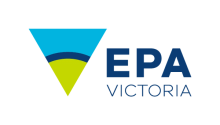Interpreting your results: VegeSafe and DustSafe
What do my results mean? Some general advice on how to understand your results.
Trace metals in your home and garden
Trace metals are substances that naturally occur in our environment in small quantities. They include metals (e.g. lead) and metalloids (e.g. arsenic). Low level exposure to some trace metals (macronutrients) can benefit our health, however exposure to high concentrations of trace metals can have deleterious health impacts. Anthropogenic activities have introduced multiple, toxic trace metals into our garden soil and homes, often in concentrations well above ‘natural’ concentration values.
After you have sent us your soil or dust and we have analysed it, you will receive a report via email detailing the concentrations of eight trace metals in your sample/s. The trace metal suite includes: arsenic (As), cadmium (Cd), chromium (Cr), copper (Cu), manganese (Mn), nickel (Ni), lead (Pb) and zinc (Zn).
Lead is the primary contaminant found in Australian soils. It is a probable carcinogen (reference: International Agency for Research on Cancer 2006) and primarily impacts neurological and renal systems. Young children face the greatest risk from Pb exposure due to their early developmental stage. Childhood lead exposure can result in attention problems, learning difficulty, cognitive loss, reduced physical growth and impaired blood cell development.
Our research shows that your home and garden may contain elevated Pb if it is:
Within 10 km of the CBD
Constructed before 1970
Near an area of current or historical industrial activity
Contains old, peeling or flaking paint
Is an older structure made of timber that was recently renovated
Interpreting your results
Your trace metal report will contain several tools to assist you with interpreting your results:
Regionally relevant guidelines
For Australian gardens, the National Environment Protection Council provides guidelines for trace metals in residential garden soils (Health Investigation Level (HIL) – A).
| Element | As | Cd | Cr | Cu | Mn | Ni | Pb | Zn |
|---|---|---|---|---|---|---|---|---|
| HIL-A Guideline (mg/kg) | 100 | 20 | 100 | 6000 | 3800 | 400 | 300 | 7400 |
If your VegeSafe soil results are above the guideline values for any of the trace metals assessed you may wish to investigate soil remediation options to reduce your exposure.
Given that there is no applicable guideline for trace metals in vacuum dust, however you can use the HIL-A table as a guide for your DustSafe results.
Median concentrations
Your report also contains the median concentration of each trace metal from every sample measured by our garden soil and household dust programs. You can compare your results to these values to assess the trace metal levels inside and around your home.
| Sample numbers (n) | As (mg/kg) | Cd (mg/kg) | Cr (mg/kg) | Cu (mg/kg) | Mn (mg/kg) | Ni (mg/kg) | Pb (mg/kg) | Zn (mg/kg) | |
|---|---|---|---|---|---|---|---|---|---|
| VegeSafe median concentration (Taylor et al. 2021) | 17,256 | 4 | 2 | 35 | 31 | 207 | 2 | 66 | 171 |
| DustSafe median concentration(unpublished) | 1,310 | 19 | - | 86 | 186 | 246 | 36 | 126 | 1,258 |
Sources: Taylor et al. 2021
MapMyEnvironment
Our programs aim to be run “By the people – for the people” and one of the ways we do this is to make our data accessible to all. You can view the results of other samples near your home by perusing our global map at www.MapMyEnvironment.com, or you can explore somewhere new, like Indianapolis or Ghana!
Chromium
Our analyses report the concentration for total chromium (Cr) in your sample. However, Cr can occur in many forms with different levels of toxicity. Regionally relevant guidelines (e.g,. the NEPC HIL-A guideline) relates only to hexavalent Cr (CrVI), which is the most toxic form of Cr.
Reducing your trace metal exposure
Adopting simple measures to reduce trace metal exposure is good for you and your family. Good practices would include removing your shoes at the door, use good quality door mats (cleaned regularly), vacuum (using a HEPA (High Efficiency Particulate Air) filtered vacuum cleaner) and wet mop frequently, mulch areas of exposed soil, and wash your hands regularly. Having pets indoors can increase the amount of trace metals tracked into the home, so keep your pets outside, if possible.
If trace metal concentrations in your soil exceed guideline values then more stringent measures may be necessary. Similarly, if the trace metal concentrations in your home appear elevated then you may like to implement additional remediation practices.
Before commencing any remediation measure it is important to identify the source of the contamination. Common sources in urban areas include:
Lead Paint. Large amounts of Pb (up to 50 %) was used in house paints prior to 1970. Since 1997, paint must contain less than 0.1 % Pb. Older homes with peeling or flaking paint are likely to contain Pb paint. You can confirm if your home contains Pb paint by purchasing a Pb paint testing kit at any good hardware store. Removal of Pb paint should be conducted by a Lead Abatement specialist.
Leaded Gasoline. Tetraethyl Pb was used as an additive in gasoline in Australia until 2002. Soil near petrol stations or major roads may have higher Pb concentrations as a result of legacy Pb gasoline emissions.
Lead in Plumbing Fitting and Materials. Lead is used in plumbing of homes (lead solder) and in the manufacture of plumbing products like brass fittings. Lead can dissolve into water, which is then used in homes and gardens. Lead free fittings for your taps are available.
Treated Timber. The trace metals used in copper chrome arsenate (CCA) treated timber can leach into the soil and contaminate the immediate area. Treated timber should not be used as a construction material in residential environments or garden beds.
Other sources of trace metals in your home and garden may be a result of hobbies (e.g., fishing, shooting, dark room photography), waste incineration, previous land use, the importation of contaminated soil, etc.
Irrespective of the source, the key action is to isolate, mitigate or remove the contamination at its source, if possible. If the soil is remediated but the source of contamination remains active (e.g., emissions from a mine or polluting industry or activity) then re-contamination may occur over time.
Soil remediation
Remediation strategies for soil contamination range in cost and efficiency. It is important to note that the results of your VegeSafe and DustSafe analyses are ‘screening level’ data. You may wish to submit your soil to a National Associated of Testing Authorities (NATA; Australia) accredited laboratory for further analysis (including drying, sieving and analysis using Inductively coupled plasma mass spectrometry (ICP-MS)) before conducting major remediation works. An environmental consultant or builder that specialises in contamination management will be able to assist you with planning and executing effective remediation works for your home.
Examples of remediation strategies include:
Excavation. Removing the top 30 cm of soil and replacing it with clean, purchased soil. This is the most effective remediation strategy but is a high-cost exercise. We recommend that this work is overseen by an environmental consultant to ensure adequate site remediation and correct disposal of contaminated waste. Site reanalysis should be undertaken to ascertain the remediation has been effective.
Dilution. Add clean, purchased soil to low-level contaminated soil. Diluting the soil may be an appropriate solution in low-level contamination environments. This can reduce trace metal concentrations to below guideline values but will not remove the contaminant from the area.
Raised veggie beds. Construct a raised garden bed and fill it with clean, purchased soil for growing edible produce. This is a simple, cost effective solution and can be a fun DIY project, creating a garden feature for your home. Ensure the bed is deep enough so that plant roots do not mingle with the old soil. Add a geotex fabric layer at the base of the bed to maintain the barrier between old and new soil. Avoid using materials that may contaminate the garden bed, like treated timber or tyres. Contaminated garden beds can be used for non-edible plants. Find out more on building raised beds here.
Mulching. Cover exposed soil with mulch or grass. Mulching will reduce your exposure to fine dust generated from contaminated soil. Dust from the garden can enter your home and contribute to indoor contamination.
Designated play spaces. Create a sand pit using clean sand from your hardware store, grassed area or raised bed for children to play. Children are especially vulnerable to the effects of contamination due to their frequent hand-to-mouth activity and small body size. Providing a designated play area for children means they can still get their hands dirty, but in a safe, trace metal clean environment.
Home remediation
If the trace metal concentrations in your vacuum dust exceed the regionally relevant guidelines or median concentrations provided you might like to investigate strategies to remediate your home. Simple strategies include:
Use a vacuum cleaner fitted with a HEPA filter
Increase your cleaning frequency
Establish an entry system (doormats inside and outside of exterior doors) to capture pollutants and moisture
Wet mop instead of dry sweeping
Use a wet cloth to dust surfaces
Wash dusty/soil laden or work clothes separately
Have a 'no shoes' policy in the home
Use washable rugs and mats
Keep windows closed on gusty days
Wash hands regularly
Mulch exposed soil to prevent the generation of dust
A key step in remediating the home environment is identifying the source to prevent re-contamination of your home. Lead paint is one of the most common sources of elevated Pb concentrations in vacuum dust and is common in older homes with peeling or flaking paint. You can purchase a Pb paint testing kits from any good hardware store to test the paint in your home.
Other contaminants
There may be other contaminants in your home and garden environment that are not assessed by 360DustAnalysis. A NATA accredited laboratory or an environmental consultant will be able to identify a broader range of contaminants, including PFAS, pesticides and asbestos.




ABOUT US
The 360 Dust Analysis program is a global research initiative to collect and analyse data on contaminants of concern that may be harmful to human health in homes and gardens..
CONTACT US
dustsafe@mq.edu.au
gardensafe@epa.vic.gov.au
ee.dustsafe@northumbria.ac.uk
LOCATIONS
Macquarie University, NSW, Australia.
Environment Protection Authority, VIC, Australia.
Northumbria University, Newcastle, United Kingdom.
IUPUI, Indianapolis, United States.